David Coyle
Investigating Health-Aware Smart-Nudging with Machine Learning to Help People Pursue Healthier Eating-Habits
Oct 05, 2021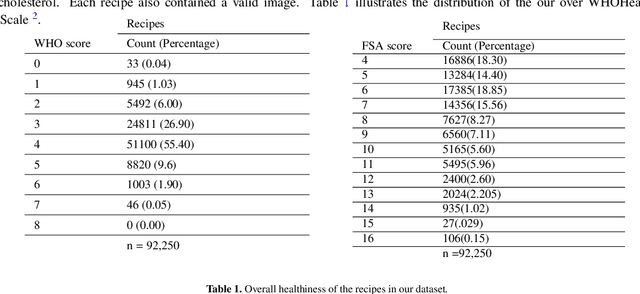
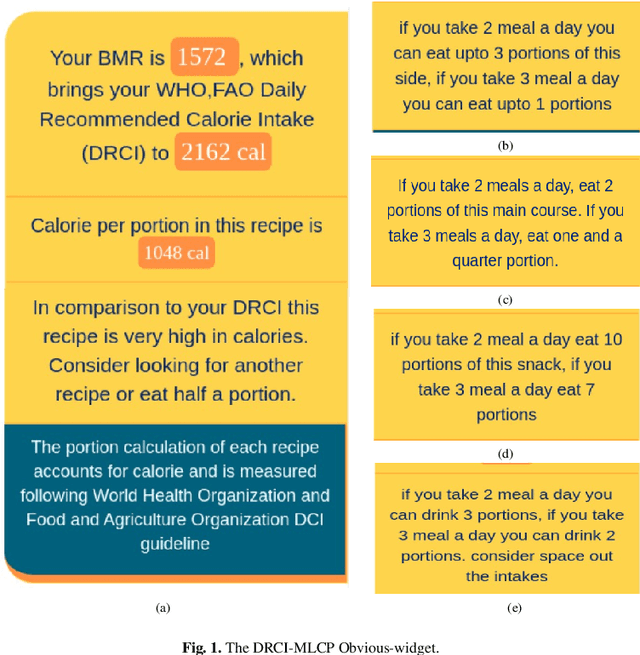
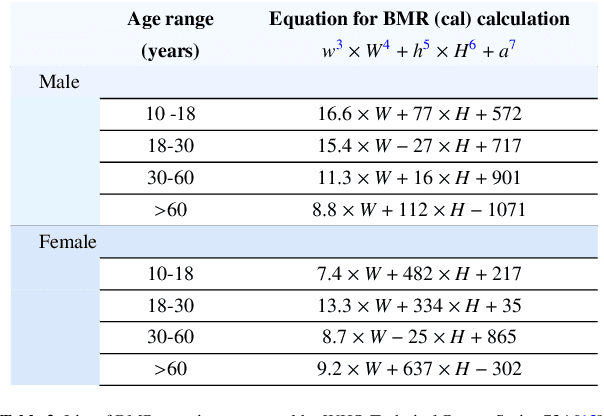
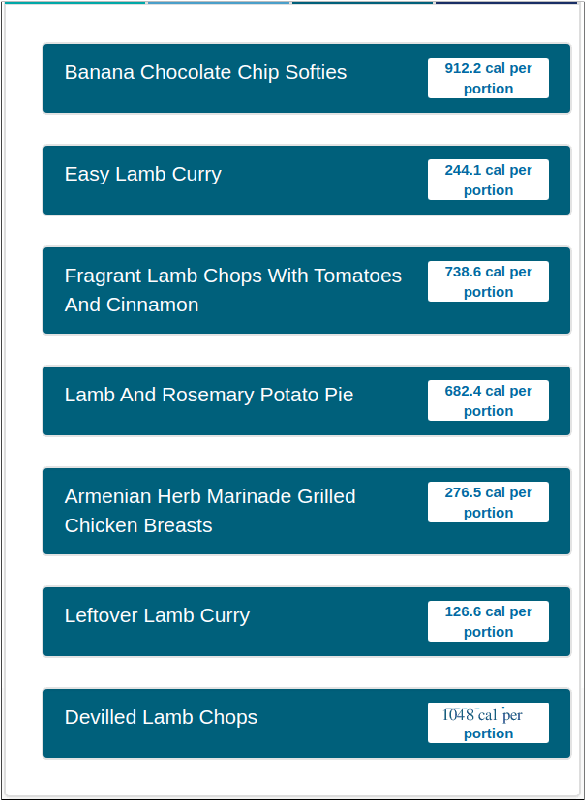
Abstract:Food-choices and eating-habits directly contribute to our long-term health. This makes the food recommender system a potential tool to address the global crisis of obesity and malnutrition. Over the past decade, artificial-intelligence and medical researchers became more invested in researching tools that can guide and help people make healthy and thoughtful decisions around food and diet. In many typical (Recommender System) RS domains, smart nudges have been proven effective in shaping users' consumption patterns. In recent years, knowledgeable nudging and incentifying choices started getting attention in the food domain as well. To develop smart nudging for promoting healthier food choices, we combined Machine Learning and RS technology with food-healthiness guidelines from recognized health organizations, such as the World Health Organization, Food Standards Agency, and the National Health Service United Kingdom. In this paper, we discuss our research on, persuasive visualization for making users aware of the healthiness of the recommended recipes. Here, we propose three novel nudging technology, the WHO-BubbleSlider, the FSA-ColorCoading, and the DRCI-MLCP, that encourage users to choose healthier recipes. We also propose a Topic Modeling based portion-size recommendation algorithm. To evaluate our proposed smart-nudges, we conducted an online user study with 96 participants and 92250 recipes. Results showed that, during the food decision-making process, appropriate healthiness cues make users more likely to click, browse, and choose healthier recipes over less healthy ones.
Personalized, Health-Aware Recipe Recommendation: An Ensemble Topic Modeling Based Approach
Jul 31, 2019
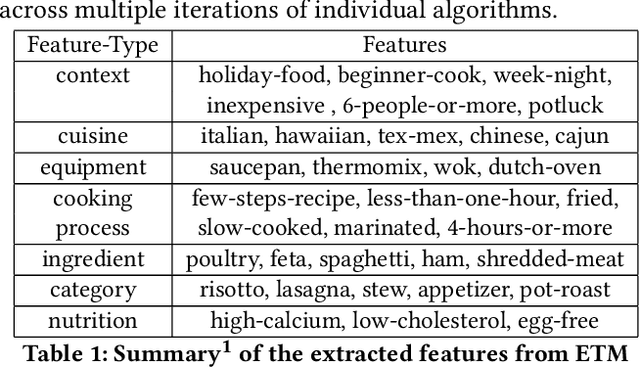

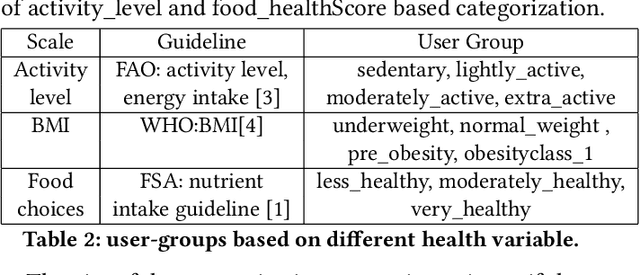
Abstract:Food choices are personal and complex and have a significant impact on our long-term health and quality of life. By helping users to make informed and satisfying decisions, Recommender Systems (RS) have the potential to support users in making healthier food choices. Intelligent users-modeling is a key challenge in achieving this potential. This paper investigates Ensemble Topic Modelling (EnsTM) based Feature Identification techniques for efficient user-modeling and recipe recommendation. It builds on findings in EnsTM to propose a reduced data representation format and a smart user-modeling strategy that makes capturing user-preference fast, efficient and interactive. This approach enables personalization, even in a cold-start scenario. This paper proposes two different EnsTM based and one Hybrid EnsTM based recommenders. We compared all three EnsTM based variations through a user study with 48 participants, using a large-scale,real-world corpus of 230,876 recipes, and compare against a conventional Content Based (CB) approach. EnsTM based recommenders performed significantly better than the CB approach. Besides acknowledging multi-domain contents such as taste, demographics and cost, our proposed approach also considers user's nutritional preference and assists them finding recipes under diverse nutritional categories. Furthermore, it provides excellent coverage and enables implicit understanding of user's food practices. Subsequent analysis also exposed correlation between certain features and a healthier lifestyle.
 Add to Chrome
Add to Chrome Add to Firefox
Add to Firefox Add to Edge
Add to Edge